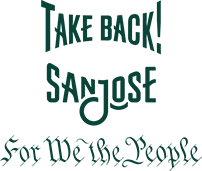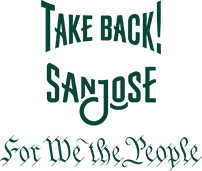
Image by Wikimedia Commons
Local election “experts” recently framed their analysis of the upcoming election around a whopping piece of misinformation, falsely asserting: “Let’s first talk about the Bay Area—of course, overwhelmingly Democratic.” The truth: in Santa Clara County, there is no majority party. Allow us to hit “repeat” on our Opp Now exclusive article examining the same, from 3/24.
5 Reasons Why Labor Loses in Santa Clara County
1.) South Bay demographics are more centrist than the rest of the Bay Area, in terms of political party identification.
Santa Clara County is not a majority-Democrat county; in fact No Party Preference (34.5%), Republican (16.9%) and smaller parties (3.4%) comprise 54% of the electorate–Democrats are 45%. Compare this to San Francisco, where Democrats reign with 56.8% of registered voters, and Alameda County with 55.4% Democrats. As such, SJ/Santa Clara County’s voter profile looks much more like exurban and rural California counties like Contra Costa County, Yolo County, Mendocino County, and Imperial County than other Bay Area metro areas.Sign up to receive updates on Opp Now articles. Click HERE.
2.) Hard-left policies don’t fly in the South Bay.
As the early March 2024 primary in SF reveals, when hard-left progressives take over city governments, negative results often ensue: increased crime and homelessness, business and citizen exodus, recalls of extremist DA’s and school board members, lowered tax base, diminished city services. And this overreach prompts a voter correction. In this regard, SF’s and Oakland’s progressive experiments act as negative case studies for South Bay voters, as we get a sneak peak as to how these unpopular hard left policies–such as Defund the Police, no-barrier Housing First, non-citizen voting, guaranteed income, open-air drug use, extremist affirmative action policies, over-delegation to non profits, for example–play out. Not surprisingly, the South Bay votes more moderately–in Santa Clara County, candidates running on far left platforms very often lose city and countywide races.
3.) Having more money doesn’t mean more support.
Due to their ability to tap labor members’ dues to help fund political campaigns, labor has a built-in funding advantage over their political opponents. But as the Chavez/Mahan race displayed, that advantage doesn’t necessarily translate into support. Our political landscape is littered with candidates who raise big coin, but can’t win. The money matters, but is only a necessary, but not sufficient, element in victory, as campaign funding is not an accurate predictor of electoral support.
4.) The local Democratic party is riven by factions.
While Democrats constitute–by far–the biggest single party in SJ and the county, they do not always speak with the same voice–by a long shot. While there is general unanimity on typical Big City issues (note the high number of unanimous City Hall votes), on certain topics–most notably Labor contracts, how to disburse Housing funds, Police Department management, and oversight (or not) of non profits–there are sharp differences which lead to frisky factional infighting. Most notable is the Labor/hard-left-dominated Santa Clara County Democratic Central Committee, which often acts as a type of Grand Inquisitor, censuring and refusing to support more moderate, centrist Democrats that get too close to business interests or run afoul of Labor-backed special interests. This schism creates what some view as two parties instead of one, as many local Democrat politicians are successful despite–or perhaps because of–lack of support from the far-left County Democratic Central Committee and/or South Bay Labor: Mayor Matt Mahan, Assessor Larry Stone, former Mayor Sam Liccardo, and sitting/former councilmembers Pam Foley, Rose Herrera, Chappie Jones, and Pierluigi Oliverio.
5. The sweet spot in local politics at the city and county level is a centrist coalition that can unite moderate Democrats, No Party Preference, and moderate Republicans.
Many observers suggest that this is precisely the coalition that Chuck Reed brought together in 2006 when he first won the mayor’s race, and continued citywide to elect Sam Liccardo and now Matt Mahan. The only issue: all coalitions are hard to hold together, and this South Bay centrist coalition is especially rickety, given that it comprises members of two major political parties, a number of minor parties, and a boatload of diverse independents. It’s hard to get this coalition to agree on everything, although they may be firmly united on very simple aspiration: Let’s not be S.F., Oakland, or Berkeley.
{Editor’s note: *We spoke off the record to political watchers from Democrat, No Party Preference, Republican, & Libertarian parties.}

